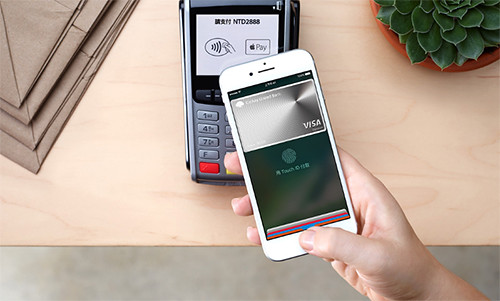Contactless Payment: The Future For Our Wallets

Apple Pay.
March 6, 2020
As tomorrow becomes today, so does the digital world’s influence on our daily lives. Luxuries like digital payment and contactless payment are not only becoming more common online, but also in the physical realm.
According to the New York Times, by the end of the decade, contactless technology is estimated to make its way into over half of all the new debit and credit cards. Apple Pay, Google Pay, Samsung Pay, and Fitbit Pay are all leading contactless payment variants that are accepted in a wide variety of stores like Seven Eleven, Ace Hardware, Vons, and many more retail companies. Most contactless payment variants are linked with some sort of card payment method whether it be Mastercard or Visa. Many of the newer cards allow for customers to directly pay from the card when it gets within an inch from the card reader.
The chips are beyond fascinating, but what’s even more intriguing is the technology behind these innovative pieces of tech. According to Credit Card Insider, these cards feature NFC chips and RFID antennas which allow for the cards to transfer all of the transaction information without the reader even having to scan the card.
Amayah Granadosin, an eighth-grader at McAuliffe Middle School, shares that her experience with Apple Pay (a contactless payment method) has been great so far. She states, “It’s very convenient and easy to operate.”
Another eighth grader at McAuliffe, Ty Murphy, also expresses his positive opinion on the technology by stating, “I think that it’s cool and convenient.”
Although for most people contactless transactions go very smoothly, there have been some cases where customers have been scammed and even hijacked. According to Seeking Alpha, “Apple Pay can be hacked. It is possible for hackers to steal the Apple Pay ‘payment token’ using public Wi-Fi.”
Even though it has some minor kinks to be worked out, the concept of contactless payment is very innovative, creative and is undeniably the future for our everyday transactions.


Kerri • Jun 25, 2020 at 11:52 pm
It looks like you’ve misspelled the word “didnt” on your website. I thought you would like to know :). Silly mistakes can ruin your site’s credibility. I’ve used a tool called SpellScan.com in the past to keep mistakes off of my website.
-Kerri
Jasmine Lee • Mar 6, 2020 at 1:37 pm
This story was so interesting and well written. I like the story idea and I think it is cool how there is so much new technology coming out that benefits many people. Great job!